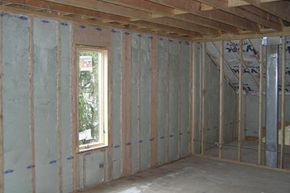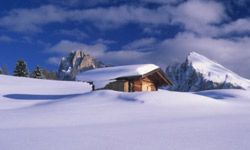No, it's not the Greek national airline. It's a cement-based insulation product, patented in 1984. The primary component of Air Krete is magnesium oxide (MgO), which is derived from seawater. Beware the simplicity of how this sounds, though. First, seawater reacts with quarried limestone to create milk of magnesia -- Mg(OH)2 -- which is then split into MgO and H2O through electrolysis. The process is energy intensive, but only about 30 percent as much so as creating the components of traditional Portland cement, which emits just over a ton of CO2 per ton of cement.
Once the MgO is isolated, Air Krete is created with the addition of a tiny bit of ceramic talc, water and a foaming agent.
Advertisement
Once it's ready for use, Air Krete looks much like shaving cream. In fact, it's a cement foam that traps thousands of tiny air bubbles. If air alone were left inside your walls, it would move, flow and transfer heat through convection. But trapping this air in millions of individual chambers forces heat to transfer through conduction -- a much slower process. This is the same function of fiberglass insulation but without the carcinogenic microfibers, without the formaldehyde used in manufacture and with more insulating power per inch of thickness. Air Krete also offers superior fireproofing, pest-proofing and noise-proofing.
Air Krete is sprayed into walls, much like many modern foaming insulations. One main difference is that when you're retrofitting a house with insulation, Air Krete can be sprayed into walls from the exterior -- rather than the interior -- of the house, reducing damage to finished inside spaces. However, installation does require training specific to the product. For example, Air Krete requires a lattice-like chicken wire to support it while drying, and if Air Krete is installed through existing house-wrap, slits must be cut in the wrap to aid drying.
Once it's properly installed and dry, Air Krete shouldn't expand or shrink, unlike other spray-in-place insulations, which may require room for expansion or the addition of another round of insulation once the first application settles.
Air Krete dries to a rigid foam, trapping its many millions of air bubbles inside. Done right, it also keeps unwanted temperatures out while keeping the climate you want inside. Just ask Al Gore, the Audubon Society and the Biosphere II preserve -- they've all used Air Krete in construction projects.
For more information on green building products, check out the links on the next page.
Advertisement


